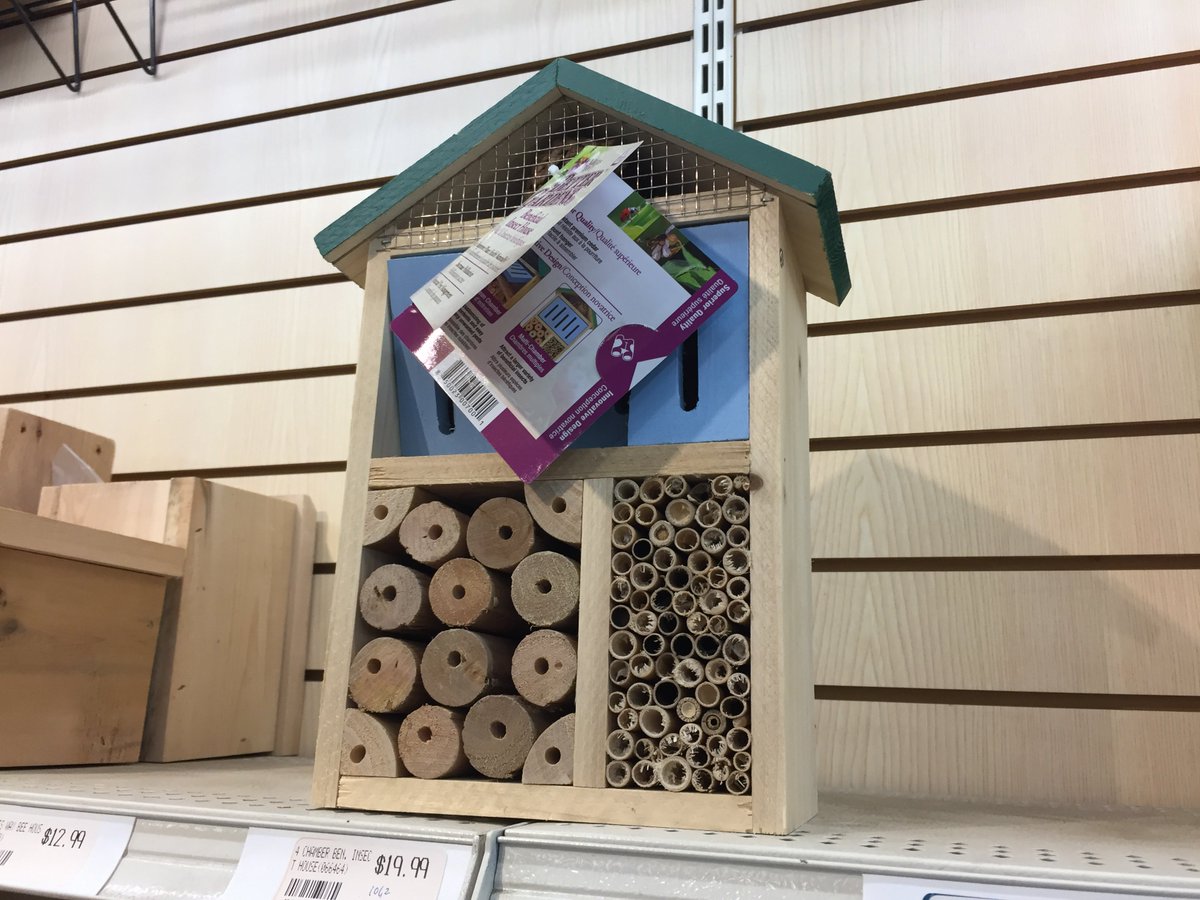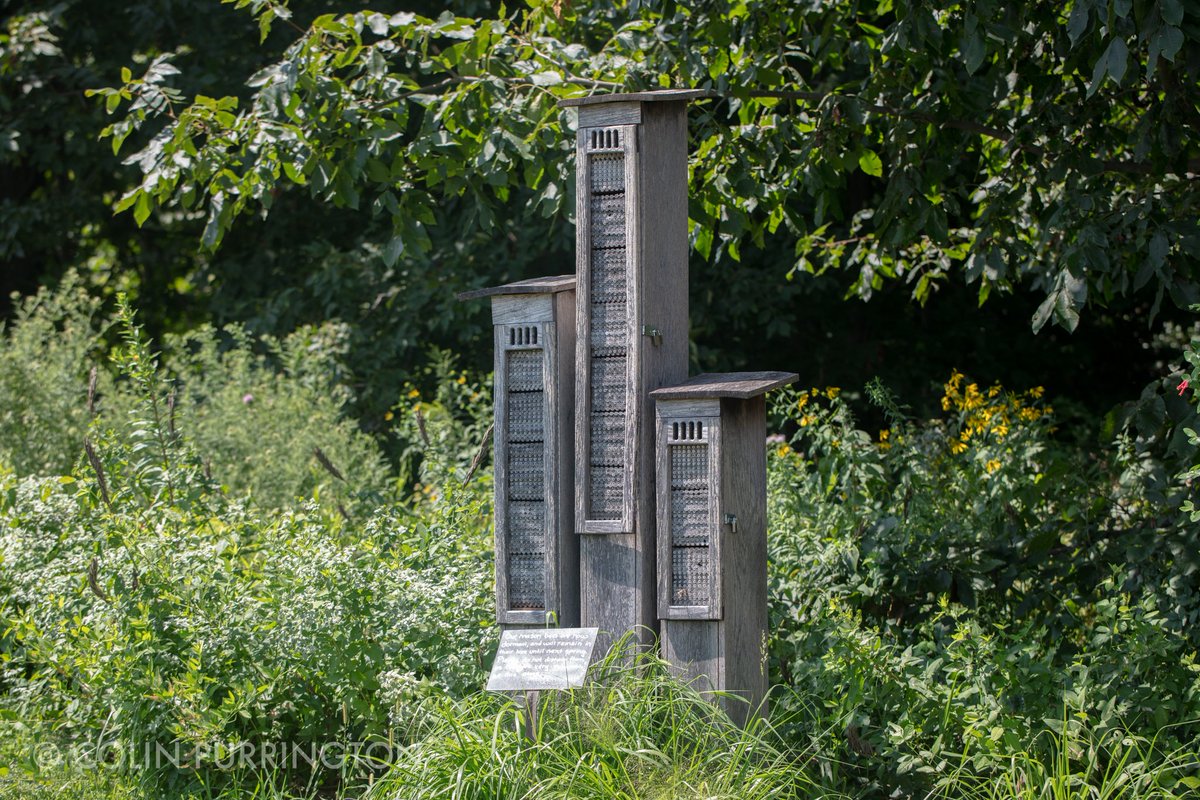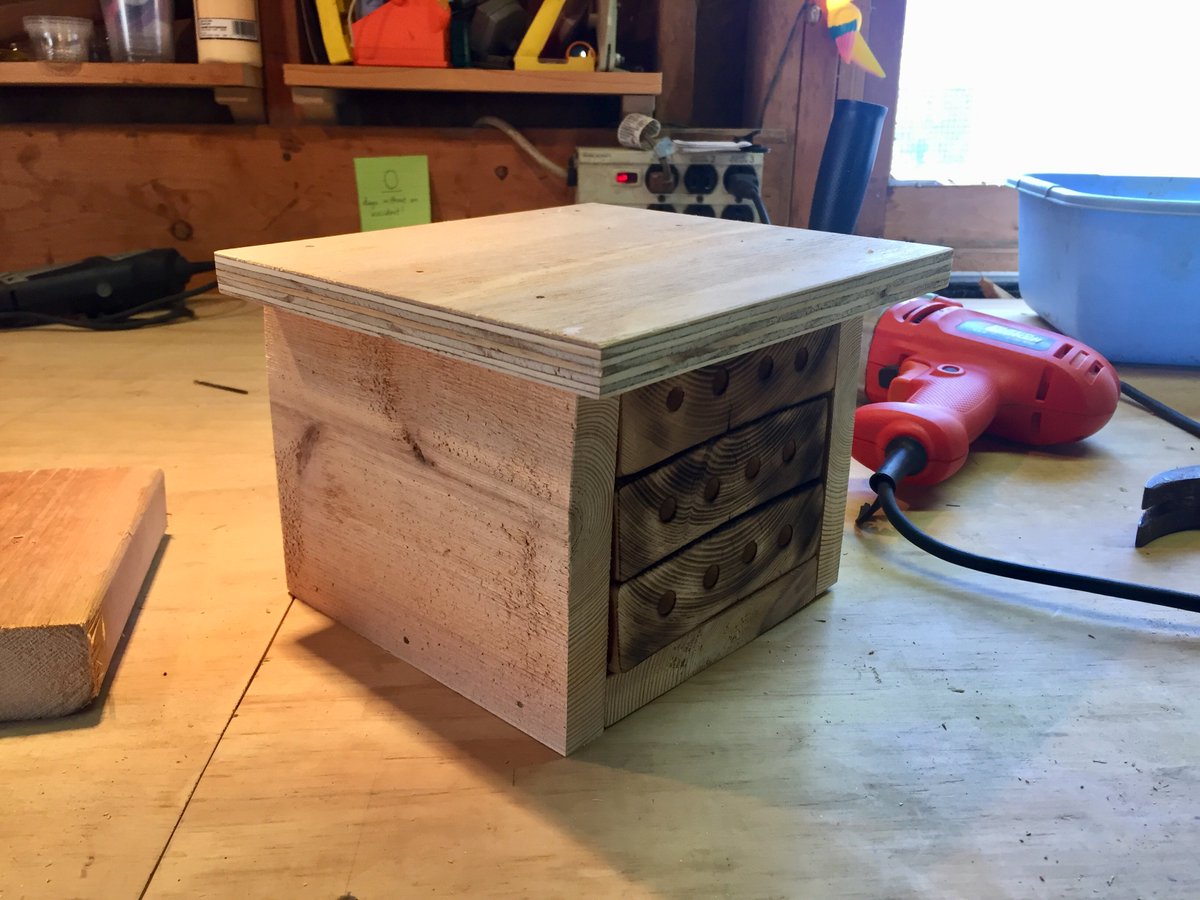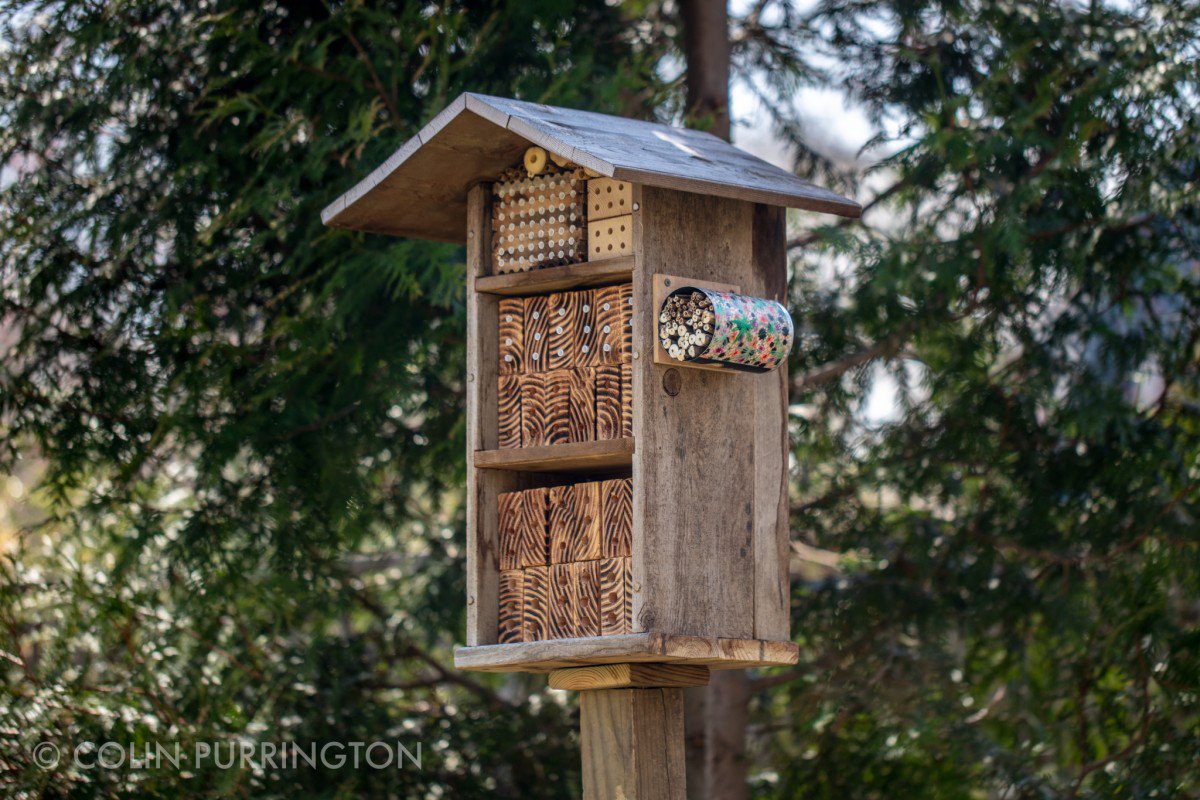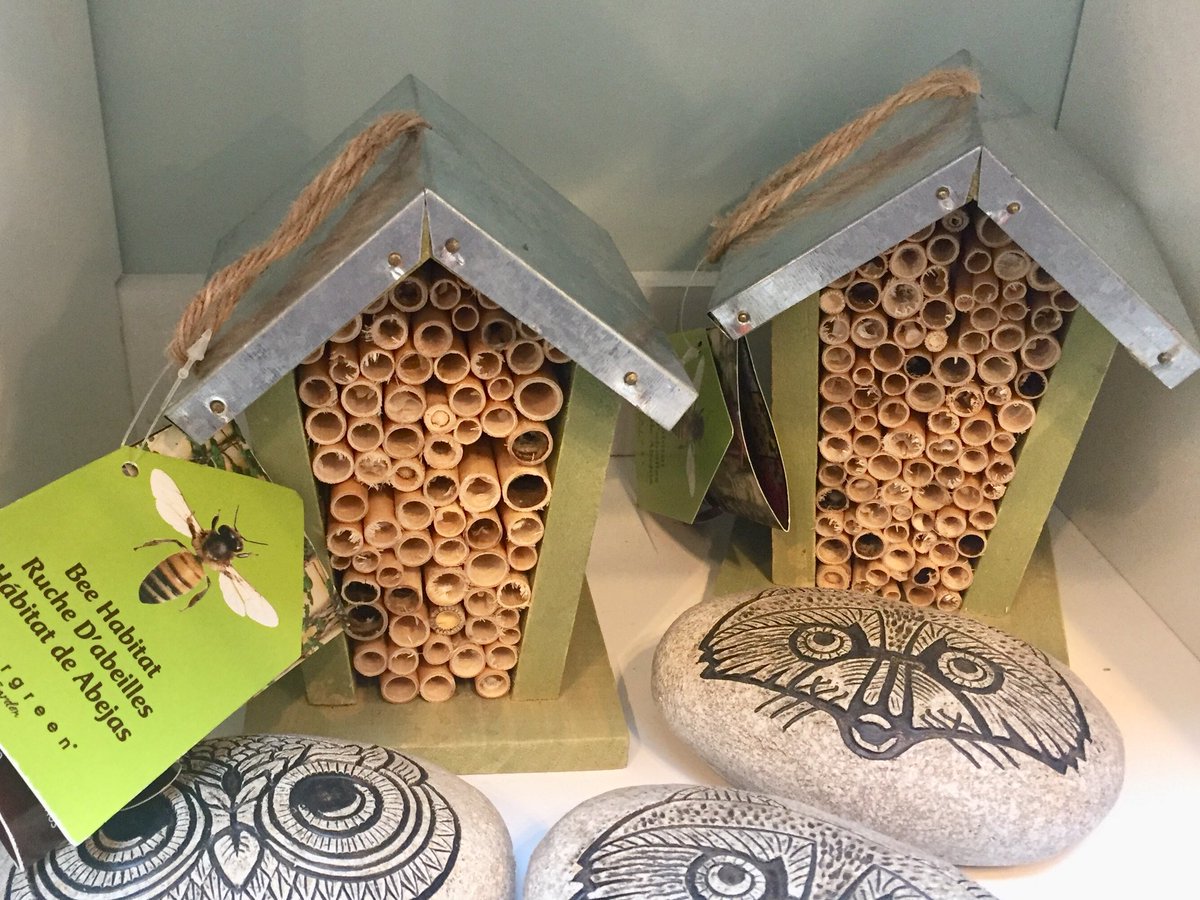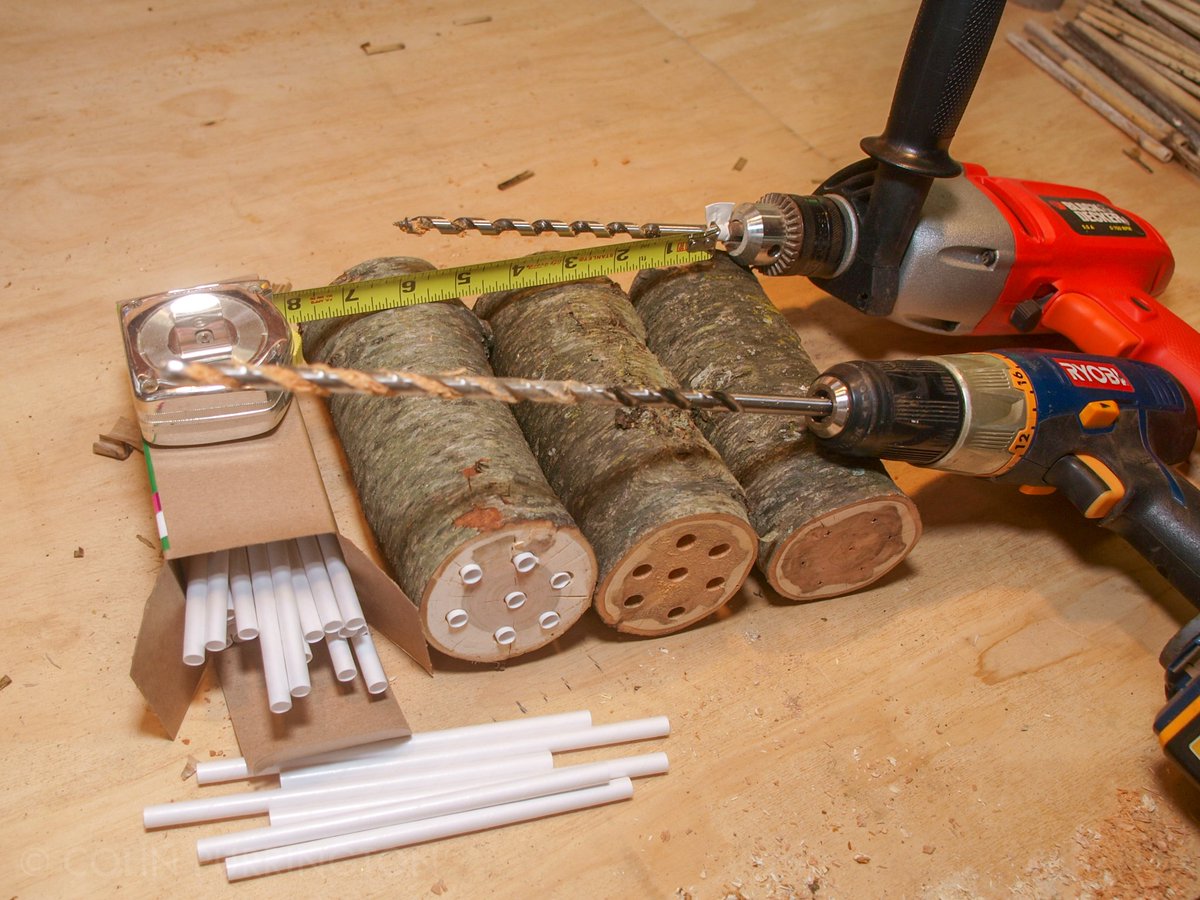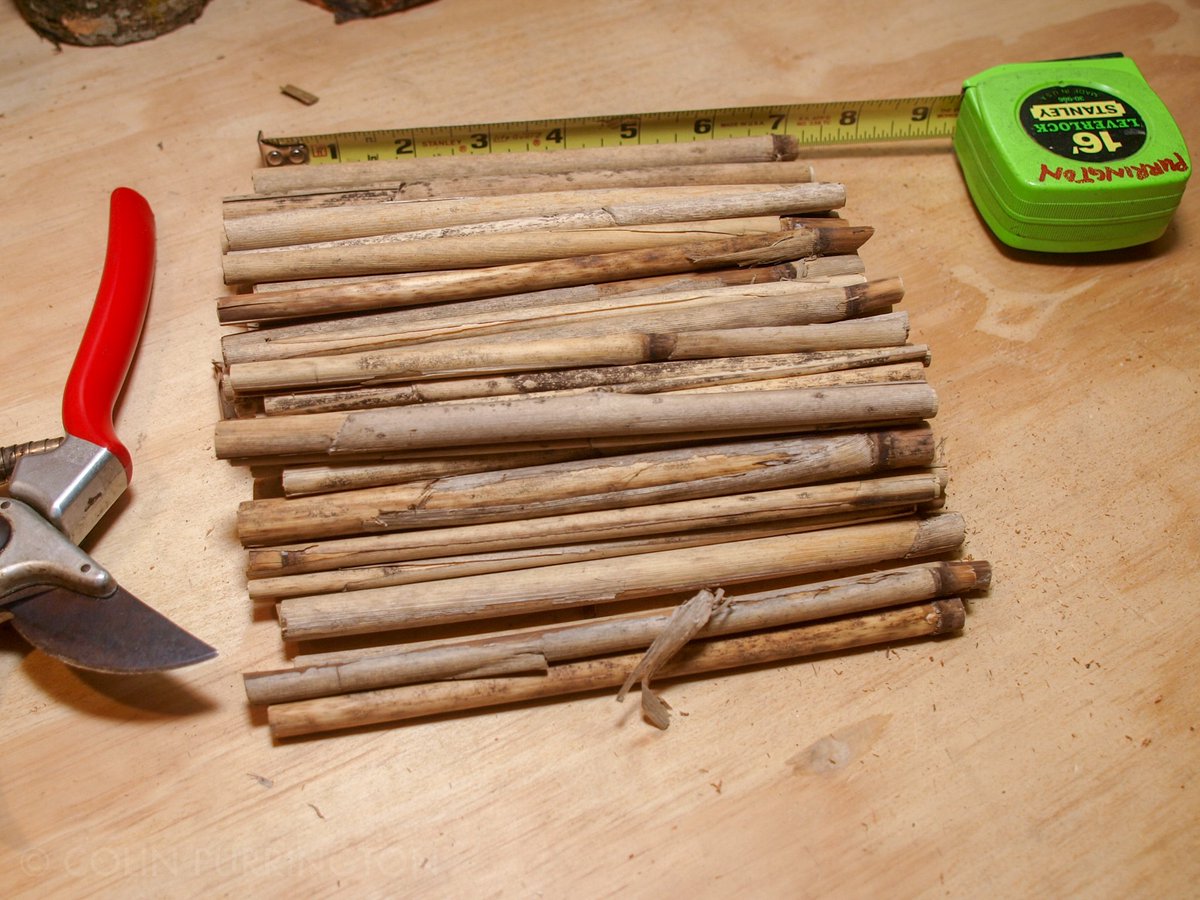Mason bee houses are easy to find these days but most are poorly designed death traps. Please don& #39;t buy them.
The one above has blocks and reeds that are glued to the back. That means you can& #39;t add fresh nesting materials each spring. And thus parasites just keep increasing in numbers and your mason bees will suffer.
If anyone is curious about what can happen if you reuse the same nests for multiple years, here& #39;s a photograph (not mine) of a mason bee covered with mites: https://www.inaturalist.org/observations/21404996.">https://www.inaturalist.org/observati...
And if you can, avoid houses that use bamboo. Word on the street is that they don& #39;t allow humidity to dissipate and cause larvae and pupae to rot. Sorry, I& #39;m just the messenger here.
And avoid all mason bee houses that are attached to a tree with string. It looks cute (and is cheap) but the wind causes shifting that can knock eggs and small larvae fall off pollen balls. That& #39;s bad, apparently.
And if you happen to work at a non-profit that pushes people to provide habitat for bees ... please, please, please do not feature photographs of sub-par mason bee hotels (glued, too short, no overhang, etc.). And don& #39;t link to the companies that make these death traps.
More broadly, it would be really great for bee hotel managers to provide a greater diversity of holes. There are lots of bee species that find 5/16" wayyyy too big. They are just as beautiful as your standard mason bees and are great pollinators. Plus fun to watch and photograph.
If you want to build your own mason bee hotel, here are photographs showing how I built mine: https://colinpurrington.com/2018/06/mason-bee-hotel/.">https://colinpurrington.com/2018/06/m... Links within can take you to dozens of articles on the topic. Shoot me a question if you have one.
And if you have residents at your mason bee house and want to identify them, load a photograph onto iNaturalist and add it to the "Bee and Wasp Hotels" project: https://www.inaturalist.org/projects/bee-and-wasp-hotels.">https://www.inaturalist.org/projects/...
Another thing to keep in mind is that larger and larger mason bee condominiums make it that much easier for parasites to find victims. E.g., once a cuckoo wasp arrives it can lay eggs in every single nest in short order. Keep your houses modest.
By the way, if you& #39;ve never seen a cuckoo wasp they& #39;re beautiful. Here& #39;s one staking out a solitary wasp: https://www.inaturalist.org/observations/14378333.">https://www.inaturalist.org/observati...
Here& #39;s a closeup showing a feature of many (not all) high-quality mason bee houses: 6" removable paper tubes. You can open them up and sort/clean pupae at end of season: https://www.inaturalist.org/observations/15383373.">https://www.inaturalist.org/observati... (The grass is from a grass-carrying wasp. They are very cool.)
If you decide on building your own mason bee house, make a few extra and give them as gifts. Everyone wants one, right? Here& #39;s the one I made for my sister: https://colinpurrington.com/2019/03/miniature-mason-bee-hotel/.">https://colinpurrington.com/2019/03/m...
Here& #39;s a mason bee house I just made for a local friend. Not shown is a 2nd set of blocks that get swapped in when this year& #39;s blocks are removed (when holes all filled and capped). Come spring 2020 these "2019 blocks" will be placed in a protected box with a tiny escape hole.
My current mason bee house, with beer-can side-car for small stems (Asclepias incarnata, Monarda fistulosa).
Here& #39;s another example of a mason bee house that should be condemned. You can tell by the tag (showing a honey bee) that the manufacturer doesn& #39;t know anything about mason bees. If you see garbage like this for sale, say something.
If you make your own mason bee house (and you should), invest in a set of long drill bits so that you can make 6" holes in wood. You can make them even deeper if you are so moved. I also have a set of metric bits for the Osmia species that are introduced from Europe.
If you have a mason bee hotel with reed sections, cut them so that the ends (on right-hand side in pic) have closed nodes so that parasites can& #39;t get in through a back door. Replace reeds *every* year. Never reuse. Trust me. I went to Reed College so I know these things.
But here& #39;s the good news: there are a lot of great mason bee houses for sale online. I don& #39;t currently have a list of these handy (sorry), but if you find a house that you& #39;d like me to inspect, send me a pic or link via email: https://colinpurrington.com/about .">https://colinpurrington.com/about&quo...
If you don& #39;t want to order a mason bee house online, get in touch with local woodworkers who sell things in shops near you and ask them to get on it. Similarly, ask your local shops to find quality mason bee houses for their shelves. There& #39;s a market for these things.
If you really want a custom-made mason bee house but don& #39;t want to buy it, let your friends and family know that you really want one. Chances are good that you have friends with the required drill bits and skill set. Or get some new friends.
Please don& #39;t forget that July 1-7 is @SolitaryBeeWeek. Post pics of your hotels and residents along with the hashtags #solitarybee and #solitarybeeweek. Posting pics helps the public understand that there are more bees than just honey bees.
... and here& #39;s a draft listing of places to buy a nice mason bee house: #suppliers">https://colinpurrington.com/misc/mason-bee-house-guide/ #suppliers.">https://colinpurrington.com/misc/maso...
https://colinpurrington.com/2019/05/guide-to-diy-mason-bee-houses/">https://colinpurrington.com/2019/05/g...

 Read on Twitter
Read on Twitter